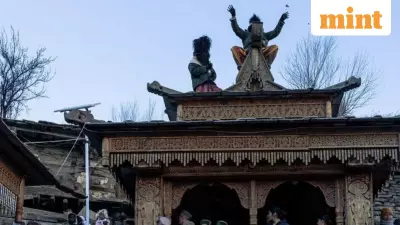
The historic city of Amritsar finds itself at a critical crossroads as ambitious plans to revitalize its hospitality sector clash with the alarming neglect of its architectural heritage. While government and private investors pour resources into tourism infrastructure, numerous heritage buildings in the walled city continue to deteriorate, raising questions about the sustainability of development that overlooks cultural preservation.
The Crumbling Legacy of Heritage Structures
Walking through the narrow lanes surrounding the Golden Temple, the contrast becomes painfully evident. Several historically significant structures show visible signs of decay, with peeling plaster, weakened foundations, and in some cases, partial collapses. Local conservationists point to buildings like the historic havelis and traditional markets that have stood for centuries but now face existential threats from both natural wear and human indifference.
Heritage experts have identified multiple factors contributing to this decline. Poor maintenance, inadequate funding for restoration, and lack of technical expertise in traditional construction methods have all played their part. Additionally, the absence of comprehensive documentation for many of these structures makes conservation planning particularly challenging.
Ambitious Tourism Plans March Forward
Even as heritage buildings crumble, Amritsar's tourism development initiatives continue to gain momentum. The city has witnessed significant investment in new hotels, restaurants, and tourist facilities, particularly in areas catering to visitors to the Golden Temple and the nearby Attari-Wagah border ceremony. Government statistics show increasing tourist arrivals, with hospitality sector growth projections remaining strong.
Recent developments include the renovation of key approach roads to major tourist sites and the establishment of new visitor centers. The municipal corporation has also initiated several beautification projects aimed at enhancing the overall tourist experience. However, critics argue that these efforts disproportionately focus on modern infrastructure while ignoring the preservation of authentic historical assets that give Amritsar its unique character.
The Conservation Crisis and Its Implications
The neglect of heritage structures poses significant risks to Amritsar's long-term tourism appeal. Cultural tourism, which forms the backbone of Amritsar's visitor economy, depends heavily on the preservation of historical authenticity. As heritage buildings disappear or deteriorate beyond repair, the city risks losing the very attractions that draw cultural tourists in the first place.
Local business owners and residents express mixed feelings about the development trajectory. While welcoming the economic benefits of tourism growth, many worry about the loss of cultural identity. The challenge lies in finding a balance between modernization and preservation, ensuring that development enhances rather than erodes the city's historical fabric.
Conservation advocates propose several solutions, including creating a dedicated heritage conservation fund, developing specialized training programs for traditional building techniques, and establishing clearer guidelines for adaptive reuse of historic structures. They emphasize that integrating heritage preservation into broader tourism planning could create more sustainable and authentic visitor experiences.
The situation in Amritsar reflects a larger pattern seen in many historic Indian cities, where rapid tourism development often outpaces heritage conservation efforts. As the city moves forward with its hospitality revival plans, the treatment of its architectural legacy will likely determine whether it can achieve truly sustainable tourism growth that honors both its past and its future.





